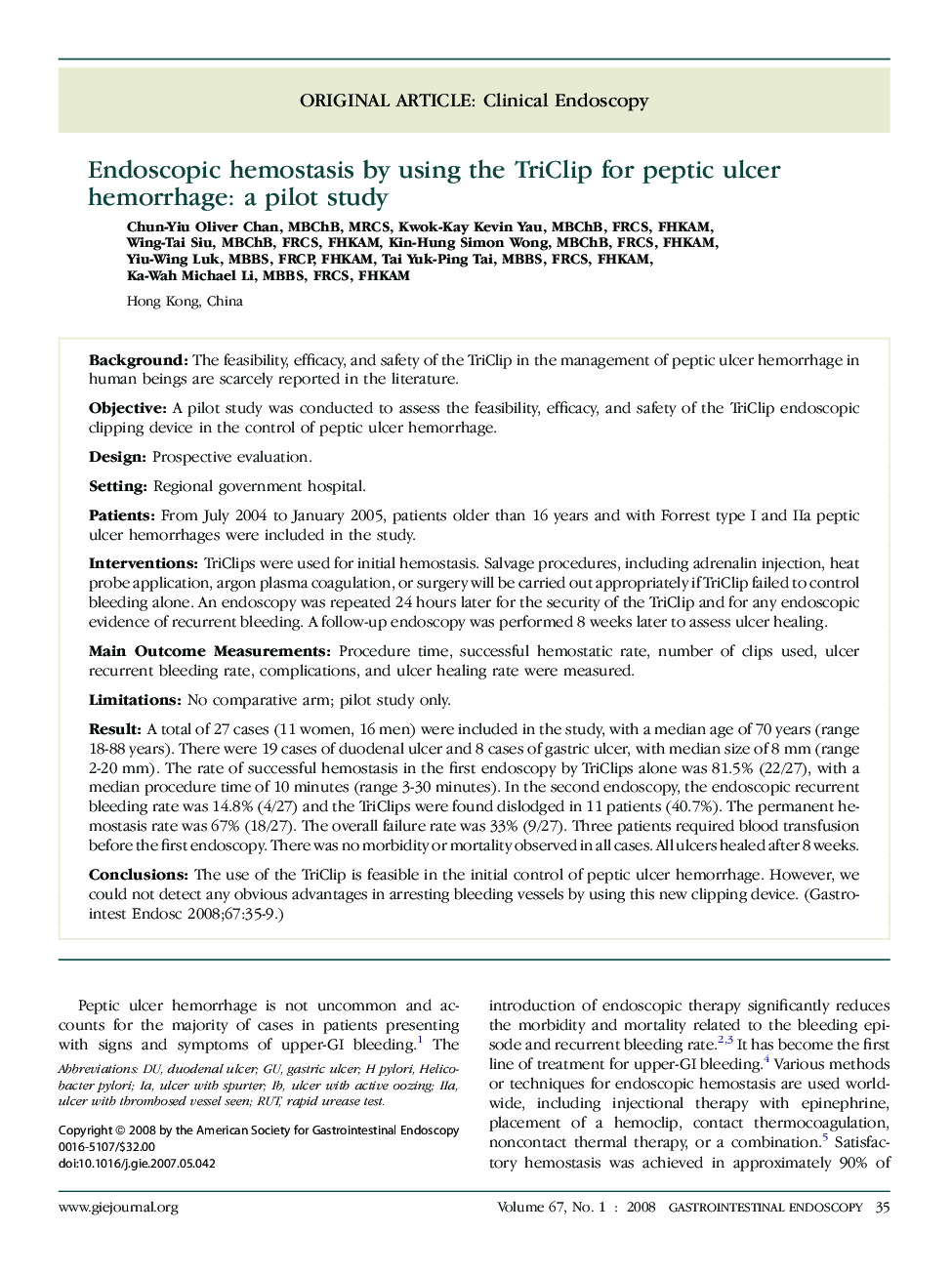| کد مقاله | کد نشریه | سال انتشار | مقاله انگلیسی | نسخه تمام متن |
|---|---|---|---|---|
| 3308954 | 1210414 | 2008 | 5 صفحه PDF | دانلود رایگان |

BackgroundThe feasibility, efficacy, and safety of the TriClip in the management of peptic ulcer hemorrhage in human beings are scarcely reported in the literature.ObjectiveA pilot study was conducted to assess the feasibility, efficacy, and safety of the TriClip endoscopic clipping device in the control of peptic ulcer hemorrhage.DesignProspective evaluation.SettingRegional government hospital.PatientsFrom July 2004 to January 2005, patients older than 16 years and with Forrest type I and IIa peptic ulcer hemorrhages were included in the study.InterventionsTriClips were used for initial hemostasis. Salvage procedures, including adrenalin injection, heat probe application, argon plasma coagulation, or surgery will be carried out appropriately if TriClip failed to control bleeding alone. An endoscopy was repeated 24 hours later for the security of the TriClip and for any endoscopic evidence of recurrent bleeding. A follow-up endoscopy was performed 8 weeks later to assess ulcer healing.Main Outcome MeasurementsProcedure time, successful hemostatic rate, number of clips used, ulcer recurrent bleeding rate, complications, and ulcer healing rate were measured.LimitationsNo comparative arm; pilot study only.ResultA total of 27 cases (11 women, 16 men) were included in the study, with a median age of 70 years (range 18-88 years). There were 19 cases of duodenal ulcer and 8 cases of gastric ulcer, with median size of 8 mm (range 2-20 mm). The rate of successful hemostasis in the first endoscopy by TriClips alone was 81.5% (22/27), with a median procedure time of 10 minutes (range 3-30 minutes). In the second endoscopy, the endoscopic recurrent bleeding rate was 14.8% (4/27) and the TriClips were found dislodged in 11 patients (40.7%). The permanent hemostasis rate was 67% (18/27). The overall failure rate was 33% (9/27). Three patients required blood transfusion before the first endoscopy. There was no morbidity or mortality observed in all cases. All ulcers healed after 8 weeks.ConclusionsThe use of the TriClip is feasible in the initial control of peptic ulcer hemorrhage. However, we could not detect any obvious advantages in arresting bleeding vessels by using this new clipping device.
Journal: Gastrointestinal Endoscopy - Volume 67, Issue 1, January 2008, Pages 35–39